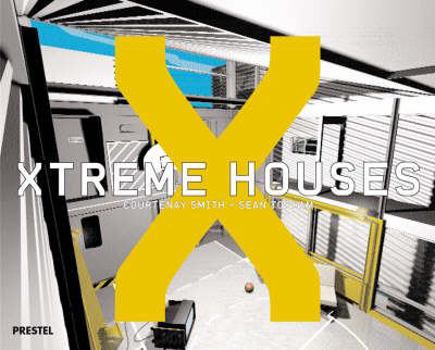Xtreme Houses
This computer age, environmental concerns, overpopulation, suburban sprawl, economic boom and bust have all conspired to bring about enormous change in our everyday lives, and perhaps nowhere more so... This description may be from another edition of this product.
Format:Paperback
Language:English
ISBN:3791327895
ISBN13:9783791327891
Release Date:October 2002
Publisher:Prestel Publishing
Length:168 Pages
Weight:2.00 lbs.
Dimensions:0.6" x 11.3" x 9.2"
Customer Reviews
4 ratings
What, no back yard deck?
Published by Thriftbooks.com User , 19 years ago
Even though I have no background whatever in architecture, I've always enjoyed the subject, especially when it comes to the unusual. In the past couple of decades, as a result of the computer revolution, the environmental movement, and the shift in the balance of power from urban/rural to suburban, home design has changed at a tremendous pace. Many of the resulting living spaces are innovative, some of fascinating -- and some are shocking. I like the large, open barnlike structures that can be divided up as needed, rather like a ground-level loft, and the idea of "microflats" (only 350 square feet) is an interesting solution to overcrowding (as long as you don't have any kids). But the coffin-like fold-up "living units" are simply weird, and the "house of cars" is a decidedly ugly bit of performance art. Personally, I have no use for a house if I can't imagine how anyone could live in it. On the other hand, the homes in Lesotho, created very inexpensively with walls of empty, wired-together aluminum cans, are an ingenious solution to that country's poverty and housing shortage. Some very interesting notions here, beautifully rendered.
Archiporn subverted
Published by Thriftbooks.com User , 21 years ago
Within the comforting scheme of the shelter mag "livestyles of the cooler than you" compendium, this book slips in a lot of pointed politics. Atelier van Lieshout, for example, upends notions of private property and public propriety with its communal settlements and inapropriaterecreation centers; its mini-state of AVL-ville, in the port of Rotterdam, was apparently so threatening to the commonweal that it was forced to shut down. Many of the architects are ardent recyclers who make buildings out of such castoff consumer materials as shipping containers and automobile tires. Just as artist Michael Rakowitz taps into the heating ducts and hidden crevices of cities for his temporary dwellings for the homeless (when landlords' backs are turned), Xtreme Houses uses the glossy book format to slide agitprop under the radar of the big business/publishing Monoculture. For those who would confine politics to specialized journals and photocopied broadsheets, this may be disturbing. Also, the book is not typographically cute or "webby," as one writer stated. It has text on the left, pictures on the right, and clear captions; Wired magazine circa 1994 it's definitely not.
Xtreme Ideas.
Published by Thriftbooks.com User , 21 years ago
If your into alternative architecture, and looking for a book that may give you new ideas, then this is a book for your library. Some of the houses featured in this book should be expanded into a book of their own. There are also lots of weird shelters that most people wouldn't class as a home unless they where destitute.
Useful, enraging guide to the new nomadic architecture
Published by Thriftbooks.com User , 21 years ago
"Xtreme" usefully points out that mobility in architecture didn't end with Archigram, people have continued refining the dome since the day of Bucky, and stacked tires in rammed-earth berms can make for some interesting domestic possibilities. The sheer wealth and variety of innovative concepts presented makes this an excellent sourcebook for ideas.That said, though, the book surrenders to typographical cuteness, and other design tweaks presumably intended to make it look "Webbier" and more contemporary. To precisely this degree, its utility is limited: the essays seem more like graphics than anything actually intended to be read, and the format makes comparing and contrasting the included projects a challenge at best.Finally, and most problematically to me, "Xtreme" presents a work like Michael Rakowitz's "paraSITES" - emergency, ad hoc homeless shelters intended, I believe, as agitprop and protest - alongside works of conventional, client-driven High Architecture. It has the effect, intentional or not, of trivializing and de-contextualizing everything Rakowitz was trying to achieve, almost as if homelessness was one more glamorous lifestyle choice for the new global nomad.Oh well. Buy the book, and have your own arguments with it. It's challenging to find material on most of these projects in dead-tree format - I've tried, believe me - so in that respect at least, Smith and Topham have done us all a favor.





